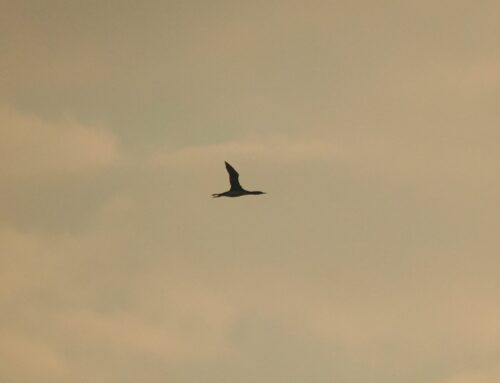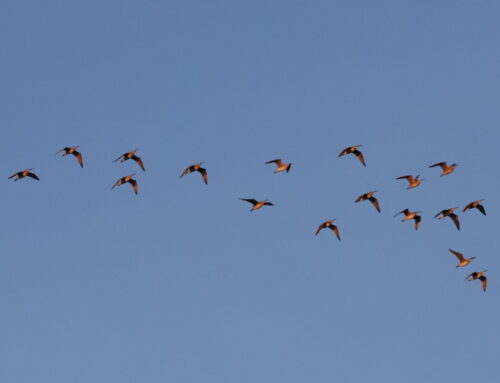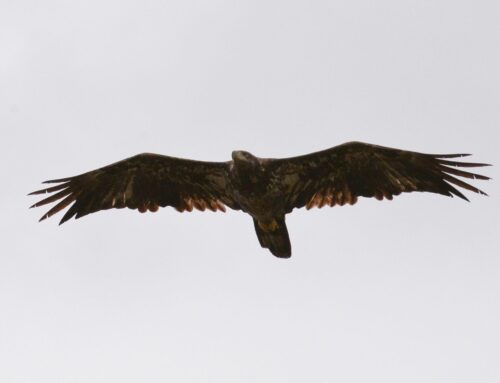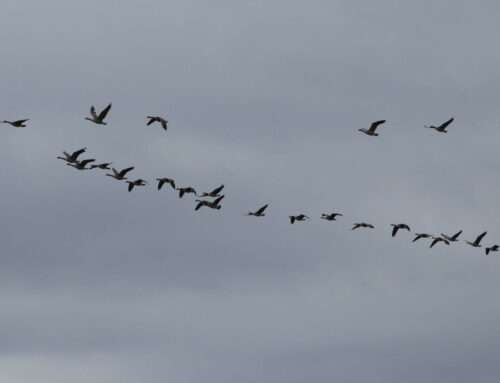Let there be no illusion that hawk watching is full of frame-filling, jaw-dropping images of raptors swooping past you in all their glory. Let there also be no illusion that time spent early-season hawk watching is filled with flights that never allow for one dull moment. March skies cover Whitefish Point like a steel gray curtain; they retain the chill of winter’s embrace and treat the sun like an unwelcome guest. Its winds are fierce, foreboding, and unrelenting. On days like these, I swear the Point simply refuses to move on. The only sign I can look for, the only thing that will tell me otherwise, is finding a bird in the sky. So I search. Hour after hour, I search. Looking for that sign of spring (a season that I know is happening everywhere else but here), all it takes is one raptor to make my day.
The days are slow due to non-prevailing winds. It takes south or southwest winds to move raptors out over the Point, and winds here largely prevail from the north and east. Raptors will migrate against non-prevailing winds, but it keeps them at a distance as they move eastward inland. The bird that rescues my day is inevitably a speck in the sky. Without binoculars, I might miss it completely, and only by looking through a scope do I even have a chance to make out any distinguishing characteristics. Identifications are hard-won, with high reward and little payoff in glory and grandeur. Up close, intimate sightings are few and far between. The reward comes with the challenge of learning what sets one species apart from another. Not by just a couple of field marks but rather by a suite of patterns and behaviors where the whole is equal to the sum of its parts.
A frequently asked question by people on the hawk deck is, “How can you tell what kind of bird that is?” I know what they want to hear is a textbook definition of field marks and attributes, but what I really want to tell them is that “it is what it is because it is telling me what it is.” A bird in the sky is its own special language, and if you take the time to learn that language, you begin to unlock the secrets of what makes that bird unique. Once you become fluent in feathers, you become privy to the whole life or death story that bird represents, and to me, here at Whitefish Point, where there is still more than a few inches of snow on the ground, that bird in the sky is spring on wings.
~ Rich Couse
2021 Spring Hawk Counter
Photo: Northern Harrier by Rich Couse
You can see live updates for the 2021 Spring Hawk Count on Dunkadoo, read Rich’s weekly blog post, and follow WPBO’s social media (Facebook, Instagram, and Twitter) for hawk count highlights this season.
If you visit WPBO, please practice social distancing while doing so. Although not required, we encourage you to wear masks if you are in close proximity to other people, even if outdoors. If necessary, a capacity limit will be set for how many people can utilize the Hawk Deck simultaneously.






